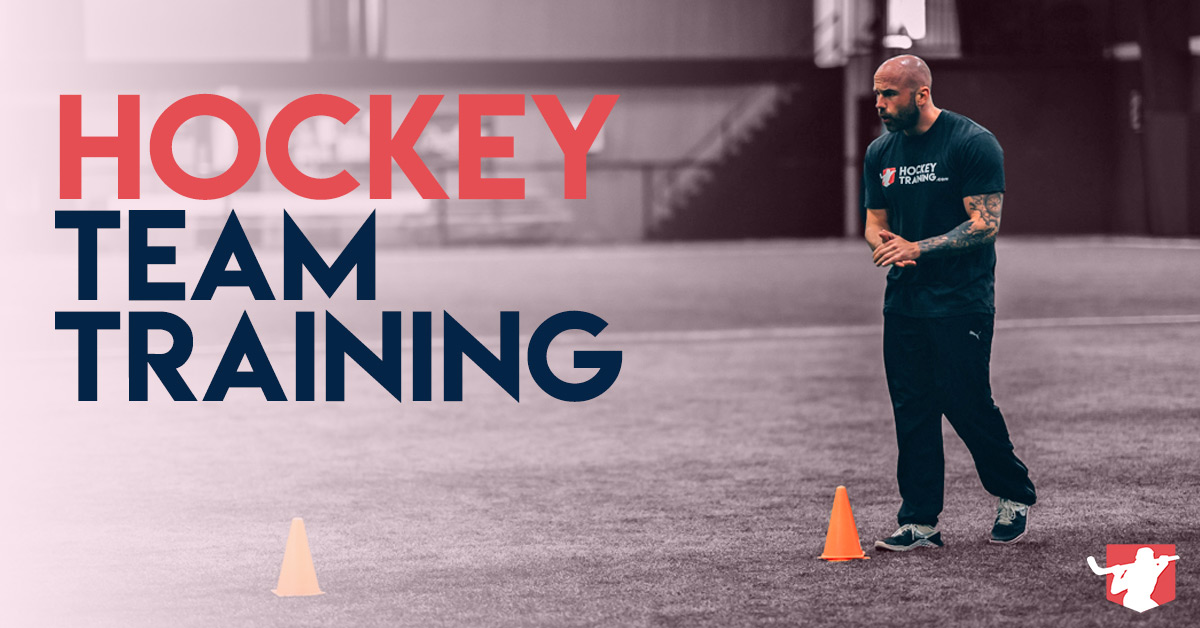In this article, I’m going to show you 21 PROVEN ways that you can use to boost your hockey performance.
To get the most out of this article, I would recommend reading the entire thing from top to bottom and then selecting the top 3 areas where you’re weakest and work on bringing those up.
You are only as strong as your weakest link in the chain.
By focusing on your weaknesses your entire game will be taken to the next level (as you will no longer have any big “performance anchors” holding you back).
Let’s get into how you can increase your performance on the ice…
#1: Hockey Specific Weight Training
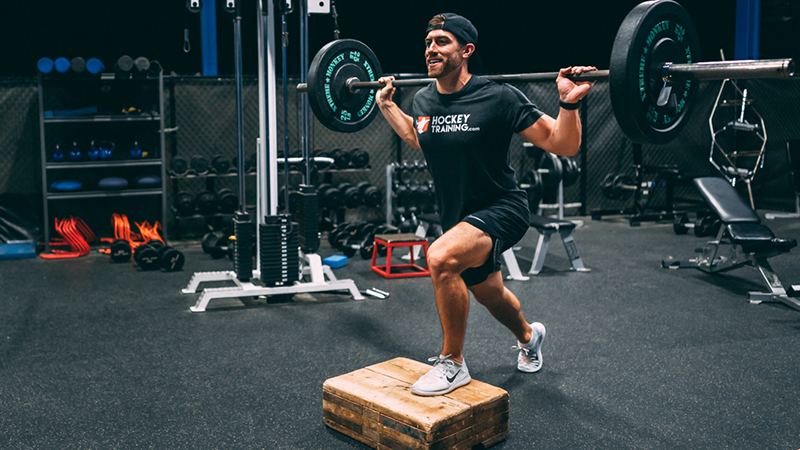
You are in the gym to become better hockey players, not become better weight lifters.
So, unless you’re on a hockey specific training program — don’t expect to get hockey-specific results!
Proper weight training will:
- make you a faster skater
- make you harder to knock off the puck
- improve your balance
- give you a harder shot
- and it is one of the best things you can possibly due to prevent injuries.
If you’re not on a hockey weight training program then you are missing arguably the most well-rounded and beneficial form of dryland training in existence.
Don’t do a bodybuilding or powerlifting program, follow a hockey-specific weight training program.
You don’t want just to get “strong,” you want to get hockey strong (which means balanced, and powerful too).
#2: Hockey Specific Speed Training
Speed training is one of the most poorly executed factors of hockey training that I see in modern-day hockey strength and conditioning.
Almost nobody does it correctly, and that’s why I wrote an entire free guide for you to check out here.
Speed allows you to skate faster.
Conditioning allows you to skate longer.
These are two incredibly different workouts and should be treated as such.
You can’t be surprised if you try to “wing it” in this area of your dryland training, and you don’t end up any faster on the ice.
To give you a hint, if someone tells you to just “go out for a run,” then I would grade your speed training at about 1/10 — You have so much more potential if you train this the right way.
A perfect balance of explosive speed, acceleration, and top speed training need to be in place utilizing vertical, horizontal, and lateral power-based exercises for the most well-rounded effect on improving your speed out on the ice.
Bookmark that speed guide I linked to above and work your way through it, I guarantee it will make you a faster hockey player.
#3: Hockey Specific Conditioning Training
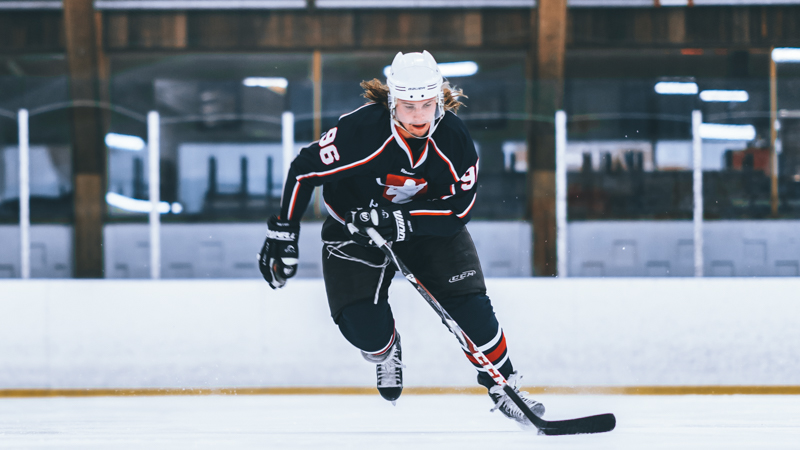
Because speed and conditioning are so misunderstood in their application within a proper hockey training program design, I decided to write an entire free guide on conditioning found here.
All too often, within the hockey industry, people just lump the idea of “in shape” as “conditioned.”
You will also hear statements get thrown around at your local gyms such as:
“Decathletes are the most conditioned athletes in the world.”
Or
“Fighters are the most conditioned athletes in the world.”
Is this really the case, though?
Or are we taking the definition out of context?
You cannot just use the word “conditioned” without context.
I don’t disagree that either of these athletes requires a great deal of cardiovascular development and muscular endurance. But the reality is that conditioning should be viewed exclusively as how well an athlete can meet the energy production demands of their specific sport.
A powerlifter who is able to generate a tremendous amount of force and power within a 6-second timeframe over the course of an entire 60-90 minute workout is equally as conditioned as a marathon runner who just ran a marathon.
These two may have varying opinions on what’s important…
Conditioning is more than “cardio.”
Conditioning is about being able to meet the specific demands of your sport for extended periods.
Each sport requires a different combination of power (ability to produce force quickly), strength (force production capacity), and endurance (ability to produce energy for an extended period).
Some sports will require more power than others with little need for endurance, while others may represent the exact opposite.
Hockey falls somewhere in the middle of this, so to maximize your hockey performance, you must analyze the demands of the sport and adjust your programming accordingly.
Take advantage of my research in this area and get your exact blueprint to hockey conditioning here.
#4: Hockey Specific Agility Training
Agility training for hockey players usually is just lumped into some fancy looking “SAQ” workout that is more geared towards getting likes on Instagram than actually making you a better hockey player.
Agility is tricky because it is both mental and physical (this is why I implement both reactive and rehearsed agility drills for the athletes of HockeyTraining.com).
Hockey agility really breaks down into two categories (that also have plenty of sub-categories within them), here’s how it looks:
PERCEPTUAL-COGNITIVE
- Visual scanning
- Anticipation
- Pattern recognition
- Knowledge/experience in the situation
- Reaction time
CHANGE-OF-DIRECTION SPEED (CODS)
- Body position
- Foot placement
- Stride adjustment
- Body lean
- Posture
- Sprint speed
- Leg quality specific to COD step
- Reactive strength
- Power output
- Strength (concentric, isometric, and eccentric)
If first step quickness and unstoppable reaction time is something you need to take your game to the next level, read my free hockey agility guide here and give the provided workouts a try.
#5: Eat A Pre-Game Meal
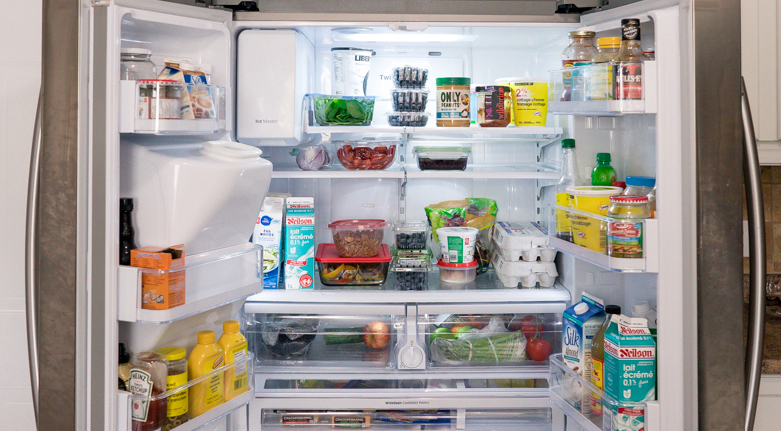
Just like a high-performance car requires premium fuel for the best possible performance, your body should be looked at the same way.
If you eat junk, expect to feel like junk out on the ice.
If you eat a well-structured hockey-specific pre-game meal, expect to feel like a beast out on the ice.
It’s funny, many athletes wonder what they should be doing for their training, but not too many seem interested in nutrition.
You won’t perform to your potential on the ice no matter what your training looks like if you don’t follow a diet built for hockey performance.
Even if you did have great skills, you can’t expect the body to work if it has no fuel to work with.
A pre-game meal will:
- Ensure optimal hydration
- Give you the electrolytes you need to get that hydration in the right places
- Provide you with the preferred source for fuel during hockey games
- Magnify the output of your speed, agility, and conditioning because you are fueled in all the right ways
If you want to know how to structure a perfect pre-game hockey meal, check out this formula.
#6: Don’t Consume Just Water During Your Games
Hockey athletes routinely consume only water during their games.
This is a mistake because the typical game lasts long enough to warrant more fast-metabolizing fuel sources (to ensure your muscular and nervous systems are being given the nutrients they need to perform optimally all game long).
Your intra-game shake should include fast-acting carbohydrates, electrolytes, and all of the essential amino acids.
You can drink this on the bench or in between periods if you like, but in any case, utilizing only water during hockey games is a sub-optimal approach.
Just out this formula here to create your own intra-game shake at the most efficient cost.
#7: Eat A Post-Game Meal
If you have been following my work for any length of time, you have likely heard me say:
You aren’t what you can do, you only are what you can recover from.
I always repeat this line because it magnifies the importance of recovery for hockey athletes, which is crucial to you achieving your hockey dreams.
There’s no better time of the day to optimize your recovery than in the period that immediately follows intense physical activity.
After your training or ice times, you NEED to implement this hockey nutrition formula to create the perfect post-game recovery meal.
#8: Utilize Active Recovery Methods
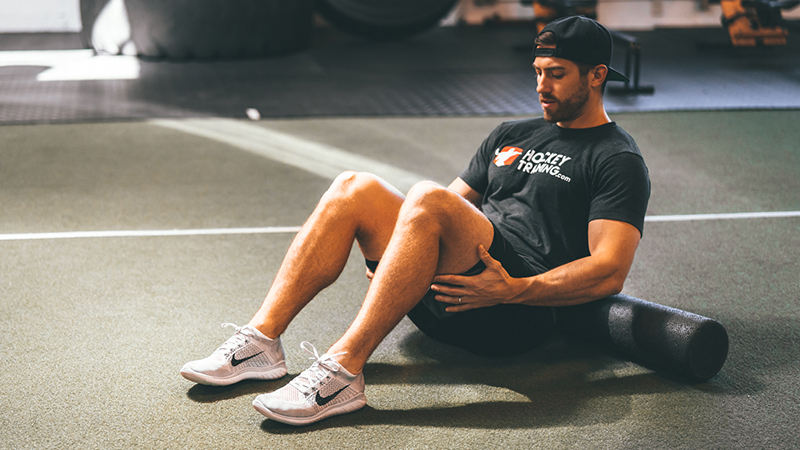
As the research continues to come out in sports science, we are coming to find that active recovery methods are actually superior to doing nothing at all.
Meaning, if you want to recover faster, then it’s beneficial for you to partake in a low-intensity activity on your off-days from training (as opposed to just sitting there and playing video games).
Even though you are doing something for recovery, it doesn’t mean it can’t still benefit your hockey performance.
The perfect solution is utilizing either Hockey Yoga or Hockey Hip Fix routines on your off-days so that you are facilitating a quicker recovery and also doing something that’s hockey specific and will improve performance.
If these routines aren’t in the cards for you, then I would recommend some light swimming or going for an easy hike outside.
#9: Do Hockey Specific Mobility Routines
Mobility allows you to move in the most technically sound and athletic way possible out on the ice.
You can think about it like this…
Hockey training potentiates your performance, but that performance potentiation will only ever be expressed if you don’t have any movement restrictions due to poor mobility.
Mobility will improve your edge work, allow you to easily perform mohawk turns, make sure you don’t get injured out on the ice, and improve your overall movement efficiency and technique out on the ice.
Now, do you need to be as mobile as a gymnast?
No.
But, do you need to be more mobile than a couch potato?
For sure.
Hockey players require hockey-specific mobility to increase their skills, and that’s why I wrote this free hockey mobility guide for you to check out here.
#10: Strengthen Your Ankles For Better Edge Work
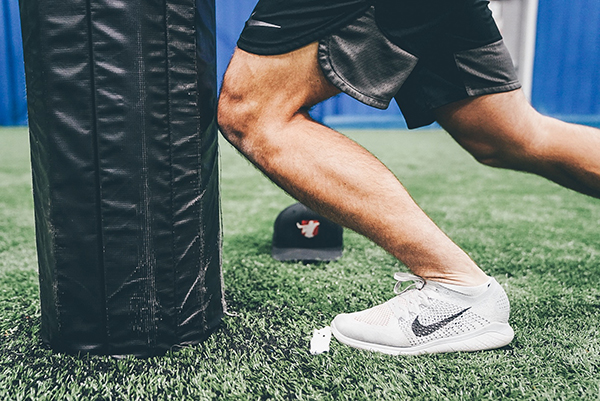
I want you to think about high-performance race cars for a moment.
Do you ever think the driver and crew just throw any old tires on there?
Or do you think that they respect the fact that the tires bear the load of the vehicle, need to be able to generate enough friction with the road to prevent slippage, and need to have a strong enough lifespan to last a race?
If you compare the tires from a race car to a transport truck, they are incredibly different in design due to varying functional needs.
Different qualities in material and shape will lead to different desired outcomes from your tires.
Your ankles and feet are your tires.
They are the first thing that comes into contact with the ice, and they need to be able to handle all of their jobs at a high-level, or else you will not meet your performance potential (just like a race car wouldn’t).
What do your ankles need?
Well:
- They need to be strong enough to handle heavy loading at high-velocities
- They need to be flexible enough not to restrict level changes
- They need to be stable enough to keep your balance
- They need to be mobile enough to get optimal angles of edge work
And they have to do all of the above while simultaneously being responsive enough to perform these tasks as quick as possible.
If you don’t have ankle training in your current hockey training regime, you’re missing out on the next big thing that’s going to improve your edge work.
#11: Unlock Your Hips For Better Mohawk Turns
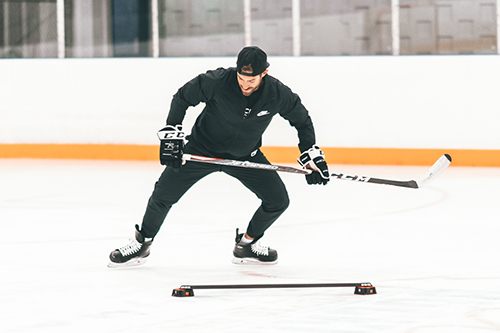
The mobility, stability, and balance of your entire hip structure is going to determine to a considerable degree how good of a skater you are.
Hip mobility impacts speed, agility, and conditioning all in one.
How your body experiences its internal environment will ultimately determine how you move in the external environment.
Tight hips lead to movement restrictions in all directions.
This is a problem that so many hockey players have. Yet, they don’t act accordingly within their warm-ups, cool downs, or mobility routines to alleviate the problem.
All the strength and power in the world will never help you until you unlock your hips and start moving more fluidly out on the ice.
If this sounds like you, check out the Hockey Hip Fix.
#12: Get Leaner
When you become lean, you immediately become a faster skater solely because of the fact that you just dropped body fat.
It’s arguably the fastest possible way any hockey athlete could improve their speed out on the ice.
If you’re carrying around 20+ pounds of extra weight, it’s no different than carrying around 20+ pounds of weight plates with you on the ice.
Body fat doesn’t serve you any purpose.
Getting lean all by itself will allow you to skate faster (via improved relative strength and power outputs), even if you don’t even change anything about your current training program.
Beyond this, becoming a leaner version of yourself will have you not just skating in a straight line faster, but it will also automatically bring positive benefits to your agility because you are of equal or greater strength now and are simultaneously carrying less body weight.
This leads to quicker high-velocity direction change and faster stop/start times.
It’s not a strange correlation that the overweight players are also always the slowest.
In addition to the above benefits on speed and agility, you will also improve your conditioning as well.
When you are lean, you avoid skating around with an additional load that your body has to deal with (that would otherwise tax your energy systems).
Conditioning may be the most significant effect you see from getting lean.
Athletes of mine who spend a summer getting lean find tremendous conditioning improvements come try-out time.
Your recovery time in between sets at the gym and shifts on the ice will improve drastically.
Some people may argue that if you weigh more, you’re harder to knock off the puck.
And this is true.
But I believe muscle weight (and an athlete with great balance) is much more useful for staying strong on the puck than body fat weight.
The bottom line here is that there is no nice way to put it – if you’re not lean, this is probably the first thing you should do to improve your hockey speed.
If this sounds like you, then nutrition is the primary focus moving forward for your next phase. Check out the Hockey Nutrition Guide so that you are doing everything correctly to maximize athletic performance.
#13: Periodize Your Entire Hockey Training Year
If you don’t know what the term “periodization” means, then you just found the next big thing that is going to take your performance to the next level.
Periodization represents the organization, structure, and sequence of your training program design.
A workout is more than just a collection of sets and reps.
A program is more than just a collection of workouts.
And periodization is more than just a bunch of programs placed one after another.
There is an extreme science here, and multiple textbooks have been written directly on the topic of periodization to manage fatigue and maximize sport-specific performance.
The training year is broken down into four cycles:
- In-Season
- Post-Season
- Off-Season
- Pre-Season
Each of these blocks has different goals and recommended training volume, intensity, and frequency.
Doing random programs or training phases back-to-back means you will just be hoping you are getting better.
But, when you properly periodize your programs, you are guaranteeing progressive overload to ensure maximal adaptations from all the hard work you’re putting into the gym.
I’ve written extensively on periodization in the past. Here is a great place to start.
#14: Get 7-9 Hours Of Sleep Every Night
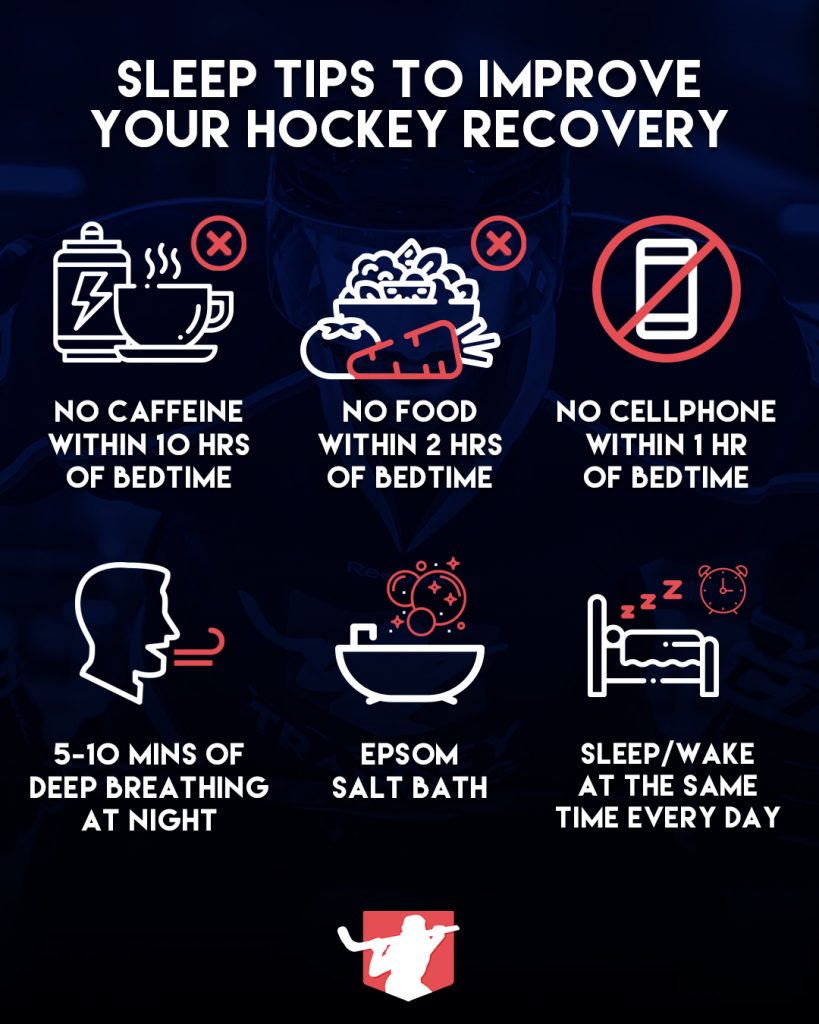
Ensuring your sleep length and sleep quality s are optimal each and every night is of crucial importance towards reaching your hockey potential.
Poor sleep has been linked to reduced reaction time, increased stress, increased cravings for junk food, increased risk for injury, hormonal imbalances, and much more.
Conversely, sleeping well every night will reverse all of those things and then provide you many more benefits on top of it.
I like to think about hockey performance like a stool with four legs on it:
- Lifestyle/Behavior
- Training
- Nutrition
- Sleep
What happens when you knock one of the legs out from under a stool?
The whole thing collapses — the structure will not stand without the foundation in place.
Sleep is an independent factor that can make or break your hockey performance.
I recorded a video about sleep a long time ago here, and two articles about it here and here for more reference as to why this needs to be a new priority in your life.
#15: Eat High-Quality Food
Calories in vs. Calories out determines your body weight.
Your macronutrient split determines what you’re going to look like at that body weight.
Your micronutrient content determines how you’re going to feel at that body weight.
It’s not enough to just count calories.
Hockey players need a high amount of micronutrient dense foods to optimize their energy production pathways, sleep quality, gut health, inflammation, electrolyte status, and overall health.
I couldn’t tell you how many times some slight variations in food selection have been total game changers for my athletes.
Calories matter, but your food choices matter too.
To get the full scoop, check out this free hockey nutrition guide.
#16: Meditate
There are some non-believers in meditation out there, but they instantly become believers when you point them towards the dozens and dozens of studies that have been done demonstrating a positive effect on both body and mind.
Meditation helps you relax, reduce anxiety, improve recovery, improve blood flow, become mentally stronger, and even drastically improve your inflammation and hormonal profiles.
I recorded a comprehensive podcast on the six science-based reasons you need to meditate here that I would say is mandatory listening for all hockey athletes.
You will be amazed at what just ten minutes of meditation per day can do for your entire life and overall hockey performance.
#17: Hockey Reaction Time Training
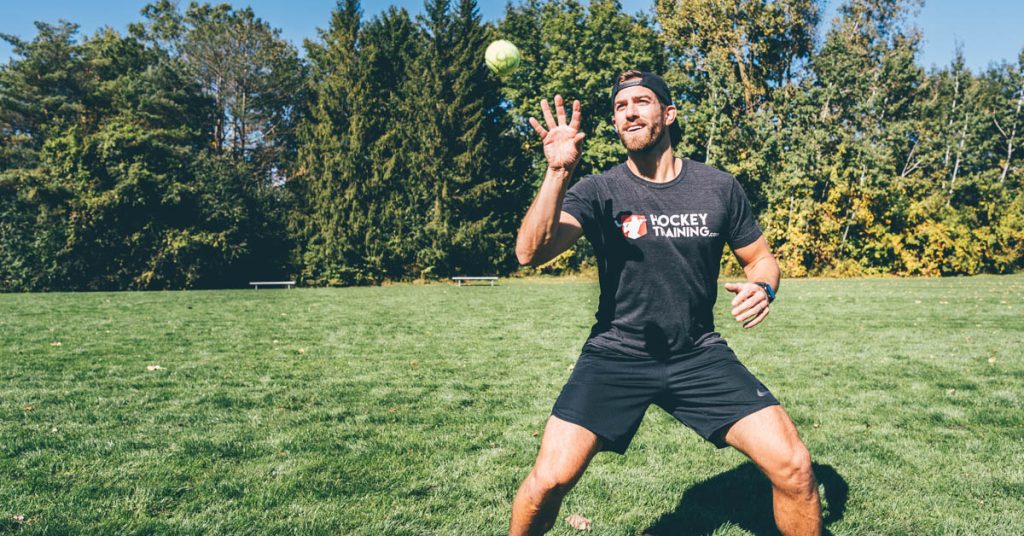
Whether you want to become the fastest hockey skater out on the ice or be a goalie that absolutely nobody can score on, working on your reaction time is a must.
Real quickness in hockey represents both the physical and the mental aspect of the game.
You can’t just have “the engine,” you need the driver to be lightning-quick as well.
High-speed decision making and correctly reacting to your opponents every move will put you one step ahead of everyone out on the ice who only trains their performance from a muscular perspective.
The mind tells the body what to do and not the other way around.
Because of this, we need to train both the mind and body to become the best hockey players we can possibly be.
This is precisely why I make it mandatory in all of my in-season hockey training programs (youth, goalie, and elite) that mental performance training is done at least once per week.
When you marry mental performance with physical performance, that’s when you start really reaching your hockey potential.
#18: Hockey Coordination Training
The term “coordination” is a tough one to nail down because it encompasses so many things at once.
If we look at the dictionary definition, it will tell us:
“Coordination is the ability to use different parts of the body together smoothly and efficiently.”
Although I agree with the definition above, it’s more complicated than that.
Coordination is broken down into four main categories:
- Stability
- Spatial Orientation
- Speed of Reaction
- Kinesthetic Differentiation
It’s funny, coordination is one of those things that’s hard to explain but really easy to see.
You know when someone is coordinated and when they’re not, yet, you don’t really know how to improve it.
And in most cases, you think you’re “stuck” with the coordination you have been given naturally.
The above four categories have plenty of carryover from one another, but this doesn’t stop them from having specific drills that only work on a single component of coordination.
For example, if you fall short in the reaction time category, you could do reaction time drills to enhance that specific endpoint.
Or if your ankle stability isn’t excellent, you can focus on ankle stability training (see our Edge Work Enhancer Program for help).
Each category of coordination can be improved to create a more coordinated hockey player.
If you want to learn how to optimize your coordination so that you can improve your hockey performance, check out this article here and also review the new in-season programs as they all include coordination training all season long.
#19: Perform At-Home Skills Drills
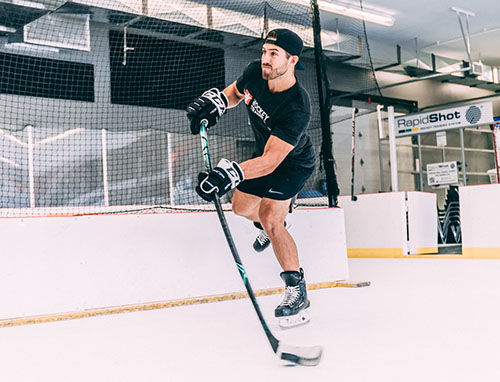
Never underestimate the importance of real skill development!
The best hockey training program and meal plan design in the world won’t help you if you’re not also working on improving your technique every week.
At-home skills drills are something you can do every single day that will take your shot accuracy, shot power, and overall stickhandling ability to a new level.
For a library of free skills drills that you can do at home (even with limited space), check out the resource Kevin created here.
#20: Write Out Your Goals
There is power in writing out your goals and setting deadlines for yourself.
Think of all the crazy times in our life where we had to get a lot done in a short period:
Planning a wedding.
Doing your taxes at the last minute.
Working on a project the day before it’s due.
Studying frantically for that test tomorrow.
These aren’t just examples of your productivity ability, but they are perfect examples to articulate the power of deadlines.
We all operate better with deadlines.
Proper goal setting for hockey is a real art to make sure you’re always heading in the right direction and setting the correct goals for yourself.
Because of this, I created two hockey goal-setting videos that I want you to watch and implement as soon as possible here and here.
#21: Build A Hockey Performance Mindset
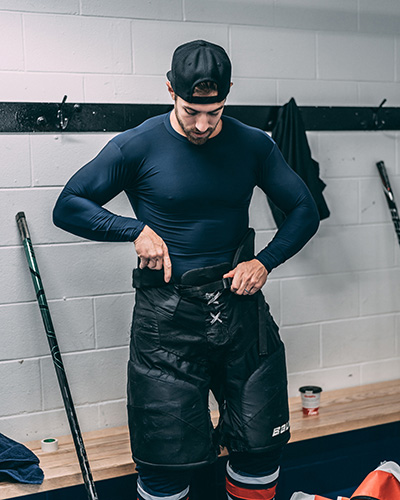
“We are what we repeatedly do. Excellence, then, is not an act, but a habit.”
This quote by Aristotle is one of the most powerful messages I have ever come across.
Making excellence a habit in your mind and then in your actions is a game plan that will never fail you.
Once excellence becomes a habit, performing well in hockey is something that just flows and comes to you naturally, rather than you needing to chase it nervously.
Habits create ease and simplicity because you never have to think about something that is habitual.
Therefore, continual excellence creates a calm yet calculated hockey performance.
There is a visually apparent “calm in the storm” that the all-time greatest hockey players had/have when out on the ice…
No matter how much pressure was placed upon them, they still consistently remained level-headed and didn’t panic in the moment.
When teaching this to my athletes to raise their performance to the next level, I consistently refer back to the idea of hurrying slowly.
Hockey players with the excellence mindset perceive their interests as challenges, they get motivated by new challenges in the sport and do not carry with them the “fear of failure” mindset when taking on a new task.
Inner-excellence is a habit, and when practiced regularly, you will develop a very high level of self-confidence, self-esteem, and self-image.
You have the “can do” attitude that a lot of us coaches preach, and this “can do” attitude provides you the willingness needed to prepare, invest, and sacrifice whatever is necessary because you realize there are no shortcuts to hockey success.
Playing the blame-game isn’t even a thought that comes to mind to those with the excellence mindset because you want to go the extra mile just to find out what’s there.
The challenge is invigorating, not exhausting.
Working on your inside will always show on the outside. Inner-excellence is your vehicle to committing to yourself honestly and productively.
Within yourself, you’re fair, honest about your effort, realistic about your character, and honest about your circumstances.
You have self-awareness in a self-supporting way.
I have written many articles and recorded many videos on building the perfect hockey mindset. Starting here and here would be perfect for you to get some momentum going.
Final Thoughts
There you have it!
21 different proven ways to increase your hockey performance.
Like I said in the beginning, I highly recommend choosing the top 3 categories that you know you need the most work on and starting there.






